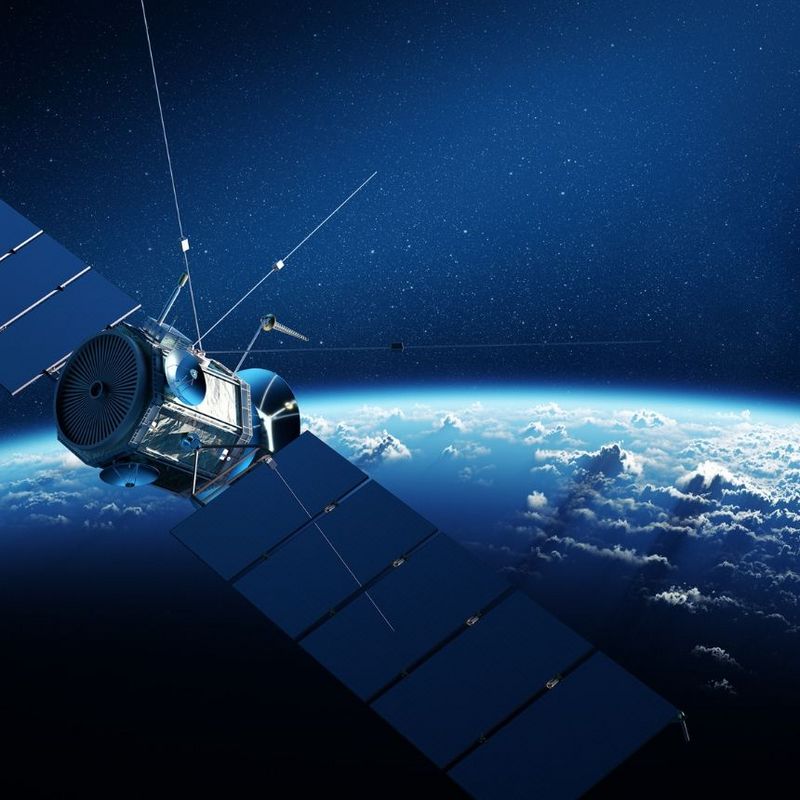01 February 2024
Thanks to their colossal computing power, quantum computers seem set to open the door to completely new possibilities. But opportunities are also knocking for hackers, because quantum computers are capable of cracking today’s encryption methods for online banking, for instance. It’s for this reason that a research team from the Institut für Photonik at Hanover’s Leibniz University under the direction of Michael Kues, board member of the PhoenixD excellence cluster, is working with ALTER TECHNOLOGY, part of the TÜV NORD GROUP, to develop and new, hackproof encryption method for Internet traffic – via satellite and based on the principles of quantum mechanics.
#explore: Mr Kues, why is the coming generation of quantum computers going to be such a big problem for present-day encryption methods?
Michael Kues: Our current encryption methods, for example for Internet communication, password transmission or online banking are based on what is known as the RSA method. Large prime numbers are multiplied to generate encryption keys, which is child’s play for computers. But the current state of the art means that it isn’t yet possible for hackers to crack this kind of encryption. This is because breaking down big numbers into their constituent parts where the prime factors are unknown is beyond the capacity of classical computers. To do this for a number with more than 2,000 digits would take a modern computer more time than the universe has been in existence. But as a quantum computer operates differently, which will also make it possible to use other algorithms in the future, it would be capable of decoding encryptions of this sort. We can assume that quantum computers capable of this kind of performance will appear in the next ten to thirty years. This would make sensitive insurance company and official data easy to read. And as the law requires such data to be stored securely for many decades, we can’t afford to waste time when it comes to getting new encryption methods out of the starting blocks. But it isn’t just a question of quantum computers: Just because there isn’t yet an algorithm for classical computers which can be used to break down prime numbers, this doesn’t mean that some clever people won’t develop one, maybe as soon as next year. This would render our current encryption methods obsolete even before quantum computers achieve their full performance potential.
What might these new encryption methods look like?
One possible path is what is known as post-quantum cryptography. This is based on algorithms that can’t be attacked by quantum computers. Algorithms of this kind are still under development and in the process of standardisation, which means that it isn’t yet possible to say which of the possible candidates will turn out to be suitable and secure. Another option would be quantum key distribution, which we are currently researching. This uses photons – particles or, rather, quanta of light – to exchange cryptographic keys between senders and recipients. This method is based on the one-time-pad method. Its defining characteristic is the one-time use of a random key that is at least as long as the message to be encrypted. This means that, theoretically at least, the method is totally secure and, unlike today’s RSA encryptions, can be hacked neither by quantum computers nor with innovative algorithms.
© Sonja SomalianMichael Kues is a professor at the Institut für Photonik at Hanover’s Leibniz University and is carrying out research in the PhoenixD excellence cluster on the development of photonic quantum technologies. Alongside new encryption methods, the physicist and his colleagues are also working, for example, on how quantum mechanical effects can be used to make measuring procedures for food checks more precise.
How does the method work exactly?
To use the method, both parties need the same key. This encryption principle has been around for a long time and was used as long ago as the Cold War. KGB officers would write the key down on paper or on a hard drive, pack it in a briefcase and take it to the recipient of the message by air. But anyone wanting to make a bank transfer online, for instance, isn’t going to want to have to go the bank first with a code in a briefcase. This is where the quantum key distribution method, by which keys can be swapped at the speed of light without any possibility of being hacked, comes into its own. The security of this method is based on the quantum phenomenon which makes it impossible to clone photons. You can’t capture and measure them without changing their state. Trying to do so would inevitably lead to errors in transmission which would be visible to the senders and recipients of the message alike. If the error rate were to reach a defined threshold indicative of a hacking attempt, the protocol would be interrupted, the key jettisoned and a new one generated – all without the hacker becoming privy to any information that would enable them to derive any benefit at all.
And why do you want to send these quantum keys via satellite?
You could in theory also send photons via the fibre-optic network. But as losses are inevitable in transmission – photons get lost on their way to the recipient – this currently only works efficiently over distances of up to about 300 kilometres. If you transmit them via satellite, however, you can cover distances of up to 5,000 kilometres. China has had a quantum satellite in orbit since 2016 and has already built a quantum network between Beijing and Shanghai which thousands of end users are connected to, ranging from the government to banks and the military. Europe now really needs to catch up and develop its own satellite system. After all, we can’t use a third-party system if we don’t know how it is constructed and whether it might be usable for espionage purposes. This work is starting to happen in Europe, and we want to contribute to it with our work.
© Adobe Stock
In future, quantum computers will be able to crack today's encryption methods. Tap-proof satellite-based methods will provide more security.
You are collaborating on a research project with ALTER TECHNOLOGY. What are you working on together?
In the ALTER TECHNOLOGY project, we’re following two paths. On the one hand, we’re developing photon light sources for satellite use which are small, efficient and also very robust to enable them to withstand the huge forces that will act on them during launch and once they are in space. Here we’ve already developed a test track and an initial integrated system that we’re now going to subject step by step to further tests and refine. At the same time, we’re developing the protocols by which the quantum keys will be generated and exchanged. We also want to show that photons can also be coded using coloured light. Every photon consists at the same time of an array of colours, which is known as “superposition”. We assume that this method, especially during daylight hours, will lead to even fewer losses than current coding methods, such as that used in the Chinese quantum satellite, for instance. We’ve built a test track for this too and carried out some initial promising experiments. The aim of this project is to create a functional demonstrator for encryption using these photon light sources that is strong, works over long distances and is completely secure. To get there, we’re going to have to overcome a few technical challenges first. For instance, we’ll need to find out how to divert the heat from the laser used in the process to ensure that it doesn’t impair the system’s functionality. The task of production and integration of the photon light source into a satellite will then be handed over to ALTER TECHNOLOGY, as they are after all already working on various projects with the ESA and other space agencies.





